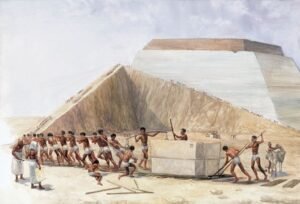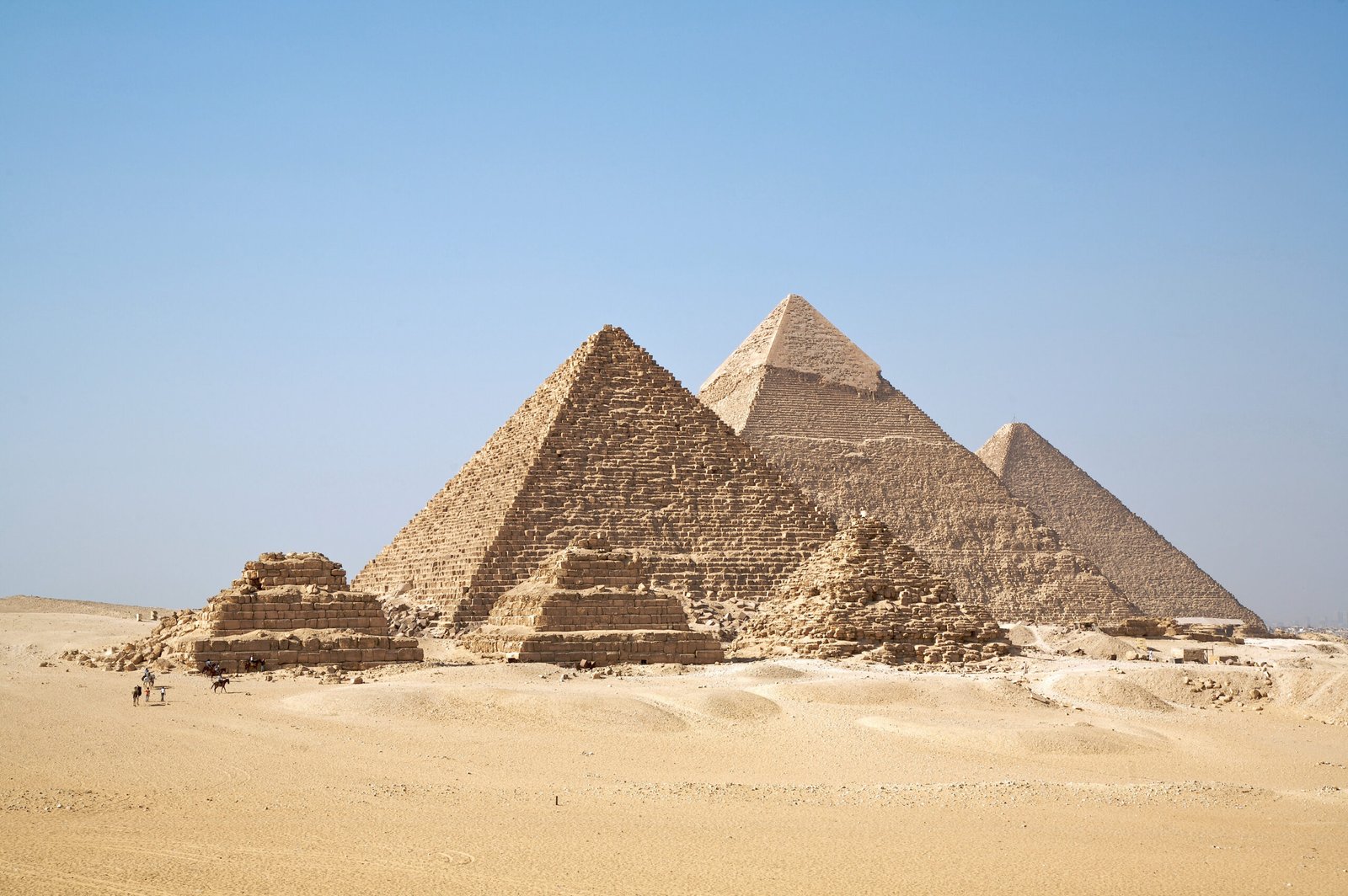In a groundbreaking archaeological revelation, a new set of tombs of the pyramid builders has been discovered near the Giza pyramids, providing unprecedented insights into the lives of the workers who constructed these ancient wonders over 4,000 years ago.
This discovery challenges historical assumptions and offers detailed perspectives on the daily existence, dietary practices, and organizational structures of the labor force involved in building the Great Pyramids during Egypt’s 4th Dynasty. This article delves into the rich tapestry of information revealed in these tombs of the pyramid builders at Giza, shaping a nuanced understanding of ancient Egyptian society.
Life and Work Dynamics of Pyramid Builders
Contrary to conventional wisdom, the laborers who constructed the great pyramids were not slaves but paid workers, a fact emphasized by Zahi Hawass, the head of Egypt’s Supreme Council of Antiquities.
The newly discovered tombs, dating back to Egypt’s 4th Dynasty, provide tangible evidence of the laborers’ honored status, interred in mud brick tombs within the proximity of the sacred pyramids they helped build.
Rotational work shifts lasting three months were a key organizational feature. This not only reflects the complexity of overseeing a massive construction project but also highlights the efficiency and strategic planning evident in ancient Egyptian management practices.

Dietary Practices and Nutritional Insights
Archaeological evidence challenges preconceived notions about the diet of ancient laborers. The approximately 10,000 workers enjoyed a diet rich in meat, receiving a daily provision of 21 cattle and 23 sheep sourced from farms in northern and southern Egypt.
This revelation reshapes our understanding of the nutritional well-being of laborers during this ancient period, showcasing a level of care and provision that defies prior assumptions.
Proximity to the King’s Pyramid
The location of these newly discovered tombs near the king’s pyramid holds profound significance. According to Hawass, this proximity suggests a level of recognition and respect for the workers. If they were slaves, they would not have been accorded. Explore also Osiris Shaft Tunnel.
The privilege of constructing their final resting places alongside the king’s tomb. This insight challenges stereotypes and invites a reevaluation of the social and economic dynamics of ancient Egyptian society.Frequently Asked Questions
Were the pyramid builders considered slaves?
No, evidence from the recently discovered tombs near the Giza pyramids strongly indicates that the workers were paid laborers. The location of their tombs near the king’s pyramid suggests a level of honor and recognition.
What was the daily diet of the pyramid builders?
The approximately 10,000 laborers working on the pyramids enjoyed a diet that included regular meat consumption. Records indicate that 21 cattle and 23 sheep were sent to them daily from farms in northern and southern Egypt.
How were the workers organized?
The workers operated on a rotational system, working in shifts lasting three months. This structured approach showcases the sophisticated management involved in overseeing the construction of the pyramids.
What is the significance of the location of the workers’ tombs near the king’s pyramid?
The close proximity of the workers’ tombs to the king’s pyramid suggests a level of recognition and respect for their role. This challenges stereotypes and indicates a more complex societal structure.
How has this discovery changed our perception of ancient Egyptian laborers?
The discovery challenges stereotypical views of ancient laborers as slaves, emphasizing their status as skilled workers. The recognition afforded by their burial near the king’s pyramid highlights their importance.
Conclusion
The discovery of tombs belonging to the pyramid builders at Giza provides a fresh perspective on ancient Egyptian society. These findings challenge long-held assumptions about the status of these laborers, emphasizing their role as respected workers rather than slaves. The detailed insights into their daily lives, dietary practices, and organizational structure contribute to a more nuanced understanding of the intricate dynamics involved in constructing one of the world’s most iconic architectural wonders. As further excavations and studies unfold, the tombs near the Giza pyramids continue to unravel the mysteries of the past, offering profound connections to the individuals who played a crucial role in shaping ancient history.

